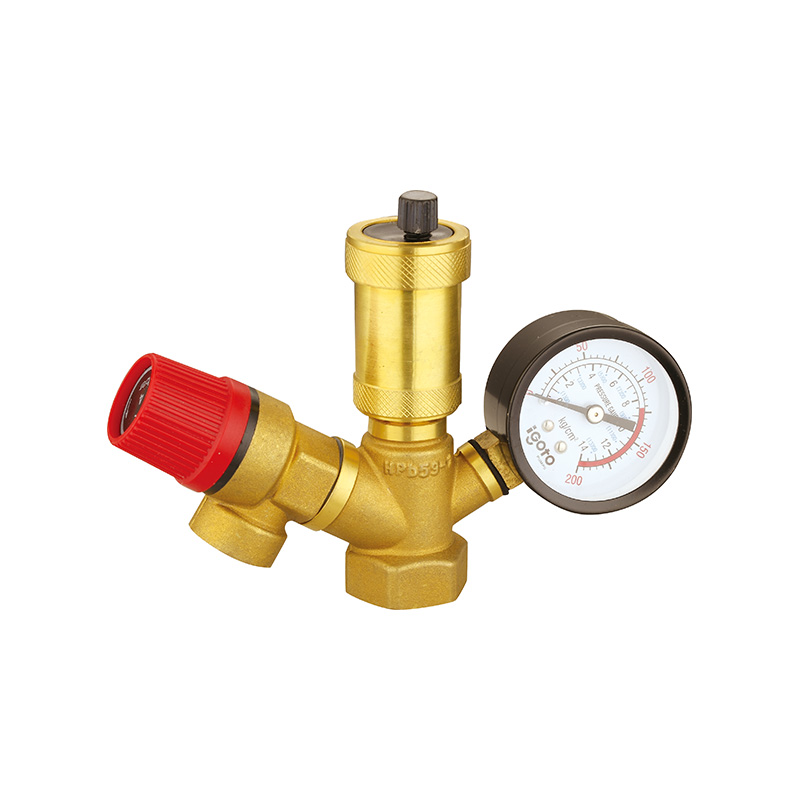How Does the Brass Plumbing Fittings Factory Begin the Process?
The production of brass plumbing components begins with raw material preparation. A Brass Plumbing Fittings Factory typically receives brass rods or billets composed primarily of copper and zinc, sometimes alloyed with other trace metals for corrosion resistance or machinability.

Material quality is confirmed through laboratory analysis to ensure that it meets specific alloy grades suitable for contact with potable water, high pressure, or chemical resistance. Once verified, the brass is formed using hot forging, extrusion, or casting methods, depending on the part's shape and functional requirements.
After forming the basic shape, components enter the machining stage. A Brass Plumbing Fittings Factory uses CNC machines, multi-spindle lathes, and threading equipment to define critical dimensions, internal bores, and thread patterns. Accuracy at this step is crucial to ensure proper sealing and compatibility with pipes, valves, or other fittings.
Machining also includes milling of hex faces for wrench application, chamfering for easier installation, and drilling for multi-directional connections. Throughout this stage, tolerances are maintained within narrow margins to prevent leaks or misalignment during assembly.
Once machined, brass fittings often require surface preparation. A Brass Plumbing Fittings Factory may polish, sandblast, or chemically clean the fittings to remove oxidation and improve surface uniformity. In some applications, a factory may apply a nickel or chrome plating layer for enhanced corrosion resistance or aesthetic purposes, especially in exposed plumbing systems.
Regardless of surface treatment method, the primary goal remains ensuring the product's durability in contact with water, air, or gas across a range of operating conditions.
Thread precision is essential in plumbing connections. The Brass Plumbing Fittings Factory uses gauges and test fittings to check thread engagement, depth, and pitch. Pipe threads must conform to BSP, NPT, or other regional standards to guarantee compatibility.
Additionally, sealing surfaces are inspected for smoothness and concentricity. For compression fittings, the integrity of flared or tapered ends is tested. Some factories may include O-rings or gaskets in the design, and their placement is validated during final checks.
Each Brass Plumbing Fittings Factory has its own quality assurance system, but certain tests are standard across the industry. Pressure testing is a key validation step. Fittings are subjected to hydraulic or pneumatic pressure to detect leaks, cracks, or deformation under load.
Dimensional checks using calipers, thread gauges, and coordinate measuring machines are also common. These ensure that each batch of fittings maintains dimensional consistency, especially for high-volume production lines.
After passing inspection, the finished product must be packed to prevent contamination or mechanical damage. A Brass Plumbing Fittings Factory typically seals fittings in plastic bags, cartons, or custom-labeled boxes with part numbers, specifications, and traceability codes.
In many cases, technical documentation such as material certificates, pressure ratings, and installation guidelines accompany the shipment. This adds to customer confidence and supports installation teams in the field.
While factories may use similar machines and materials, the consistency and attention to detail during production distinguish top-tier manufacturers. A Brass Plumbing Fittings Factory that emphasizes preventative maintenance, skilled labor, and rigorous inspection tends to produce more reliable end products.
Furthermore, the ability to customize fittings based on customer drawings, regional plumbing standards, or specific installation requirements demonstrates the factory's technical versatility.



 English
English русский
русский Español
Español عربى
عربى


